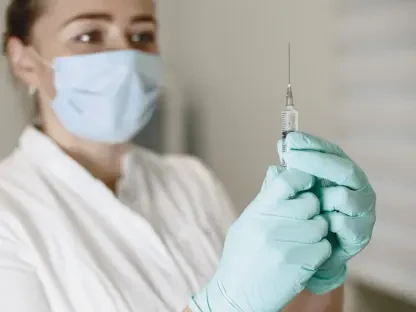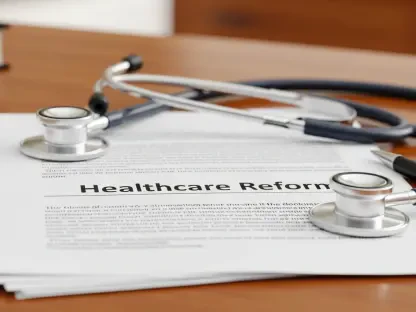The current efforts by Congress to address Medicare pay cuts come amidst ongoing negotiations to prevent a looming government shutdown, presenting a crucial moment for the healthcare community. The focus has been on mitigating a scheduled physician Medicare pay cut set to take effect on January 1, leaving many to question whether these steps will suffice in the long term. The debate around healthcare reform and financial sustainability for medical services continues to be a pressing issue for policymakers and medical professionals alike.
Temporary Payment Increase and Advocacy Response
In response to the impending pay cuts, Congress has enacted a 2.5% temporary payment increase under the Medicare Physician Fee Schedule to address these concerns. Radiologists and other physicians were initially facing a 2.8% cut to the conversion factor used for payment calculations, prompting significant disapproval among medical advocacy groups. The Medical Group Management Association (MGMA) has been notably vocal, with Vice President Anders Gilberg expressing frustration over the partial mitigation, emphasizing the deep financial strain felt by over 15,000 group practices across various specialties, particularly those within radiology.
Furthermore, the American Medical Association (AMA) has highlighted a broader issue of declining physician reimbursements under Medicare, noting a significant drop of approximately 29% in inflation-adjusted payments since 2001. Radiology groups, like the Radiology Business Management Association (RBMA), also echoed these concerns, pointing out that this reduction marks the fifth consecutive year of cuts. RBMA’s Co-Executive Director Linda Wilgus stressed the necessity for a sustainable, long-term solution, mentioning significant bipartisan opposition to these continuing reductions. Advocacy groups are calling for more comprehensive measures to alleviate the financial pressures faced by medical professionals.
Mixed Reactions to Other Healthcare Provisions
The continuing resolution has also garnered mixed reactions from the medical community with respect to other healthcare provisions. While the extension of telehealth flexibilities through the end of 2026 has been welcomed, and the increase in alternative payment model incentives to 3.5% received positive feedback, these changes do not address all concerns. A notable point of contention has been the omission of the Improving Seniors’ Timely Access to Care Act from the resolution. This bill intended to streamline prior authorization processes within Medicare Advantage by implementing measures such as electronic processing, increased transparency, and expedited approvals for routinely approved services.
Despite extensive support from a wide range of healthcare advocacy groups, along with favorable scoring from the Congressional Budget Office indicating no additional impact on federal spending, the bill was nevertheless excluded from the final resolution. Advocates argue that this omission unduly benefits insurance companies while compromising patient care by continuing delays and denials in prior authorization processes. The MGMA has labeled this as a significant end-of-year congressional failure, emphasizing the bill’s thorough eight-year vetting process and extensive backing from over 500 provider and patient advocacy organizations.
Legislative Shortcomings and Advocacy Efforts
Growing criticism has emerged towards Congress for its handling of healthcare legislation, with the Regulatory Relief Coalition – which includes MGMA – condemning what it perceives as diluted language in revised bills. This coalition argues that repeated revisiting of bill language has led to provisions that strip away essential transparency and oversight protections while failing to address public concerns surrounding the Medicare Advantage program’s functioning. There is a clear commitment among these advocacy groups to pursue legislative action that prioritizes patient care and seeks to lessen undue administrative burdens on healthcare providers.
The ongoing resolution has also pushed the federal government funding deadline from December 20 to March 14, providing a window for the new Congress and president-elect to negotiate comprehensive, full-year funding. This measure, seen as critical to prevent a government shutdown, is also influenced by the proximity to the year-end holiday season. It underscores a temporary but necessary step toward addressing broader fiscal issues facing the healthcare sector.
Ongoing Legislative Efforts and Broader Implications
Congress is currently working to address planned Medicare pay cuts against a backdrop of ongoing negotiations to prevent a potential government shutdown. This has made it a critical time for the healthcare sector. The primary focus is on lessening a scheduled Medicare pay cut for physicians set to start on January 1. However, many are left wondering if these efforts will be enough to ensure long-term stability. The ongoing debate surrounding healthcare reform and the financial sustainability of medical services remains a significant concern for policymakers and medical professionals alike. As they grapple with these issues, there are questions about whether these measures will offer a durable solution. The healthcare community is closely watching these developments, understanding that the outcomes will have lasting implications for the future of Medicare and the delivery of healthcare services in the United States. Ensuring financial sustainability while maintaining high-quality patient care continues to be a shared objective, albeit a challenging task.









